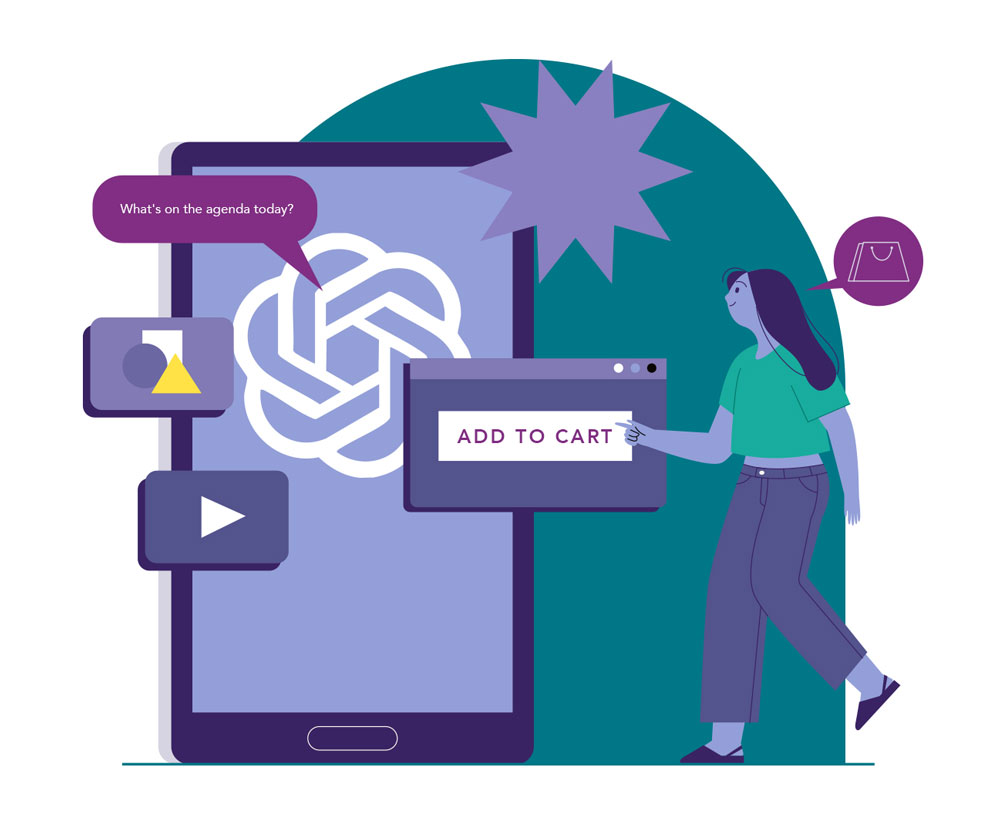 Although it’s still early days, Open AI’s ChatGPT has the potential to become your brand’s next big acquisition channel, writes Brendan Almack.
Although it’s still early days, Open AI’s ChatGPT has the potential to become your brand’s next big acquisition channel, writes Brendan Almack.
Global ad investment has more than doubled over the past decade, with Alphabet, Meta, and Amazon accounting for more than 70% of that incremental investment. Between them, they are expected to collectively gobble up more than half the global ad market by 2028. A phenomenal achievement.
Their success as ad platforms boils down to one very simple trait that each of them shares – advertising on these platforms works. It’s undeniable. We can tie ourselves in complicated knots around attribution, incrementality, and long vs short term, but nobody can question that advertising on these platforms generates sales.
The tipping point for each of them came when they married a fantastic ad product with a very (very) large audience, a critical mass.
So, with the benefit of hindsight, we now get to watch Open AI’s ChatGPT attempt to go on a similar journey, and the reason that it’s a journey worth paying attention to for advertisers comes from an announcement they made last week. OpenAI is launching a shopping experience inside ChatGPT, including product picks and buy buttons. These results will not be paid-for results initially and will be extracted from structured metadata. If you’re an SEO or work with product feeds, this will be very familiar territory for you.
Two questions that advertisers will be asking themselves?
- Does ChatGPT have a critical mass audience?
Let’s take a look at that. ChatGPT’s growth has been explosive. In two years, they have managed to grow their user base to 400 million weekly active users. That’s two times as many users as the artist formerly known as Twitter had when it went public in 2013. It took Facebook 3 times as long to amass that size of an audience.
Great progress. However, let’s put it in perspective. There were 373 times more searches on Google than ChatGPT in 2024. ChatGPT would effectively represent less than 1% search market share. Bing has a 4% share, and nobody views it as a credible threat to Google. So, ChatGPT needs to see continued explosive user growth to reach that critical mass.
- Could ChatGPT become your next big acquisition channel?
We’ve been tracking this for each of our clients over the last year. On average. Traffic from the likes of ChatGPT is <1%. However, there are a few caveats. Not all ChatGPT traffic will be trackable. If you have used ChatGPT, you’ll have come across many examples where products and/or brands are not linked to a website, meaning your next action is to, ironically, Google that product or the brand.
Secondly and most interestingly, traffic from these sources is increasing rapidly. Across our benchmarked data set of clients, we’ve recorded a 162% increase in AI traffic since the beginning of the year.
If the audience does reach a critical mass, it’s not a stretch to see a world with paid, feed-based shopping ads on ChatGPT. That’s when things will get really interesting.
So, what steps should advertisers be taking right now to ensure they don’t miss any opportunities within the evolving search market?
Start tracking AI traffic! If you’re a Wolfgang SEO client, this is already happening. If not, our SEO team has kindly put together a handy tracking template that you can link to your own Analytics profile. If you are not currently a Wolfgang Digital client and would like to get your hands on this handy template, you can email the Wolfgang SEO team – (seo@wolfgangdigital.com), and they just might share it!
Start researching your own brand, your competitors, and the products/services that you sell on ChatGPT: You need to experience how the discovery journey is evolving. ChatGPT might not ultimately be the winner, but they have changed the discovery game, and there’s no going back.
I can’t stop thinking of that Hemingway quote – “Slowly at first, then all at once.”
If 0 to 400 million users is slow, strap yourself in for the all at once…
Brendan Almack is the managing director of Wolfgang Digital.
























